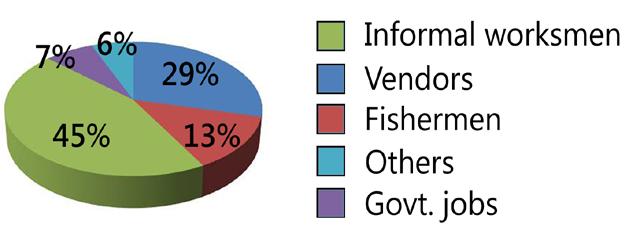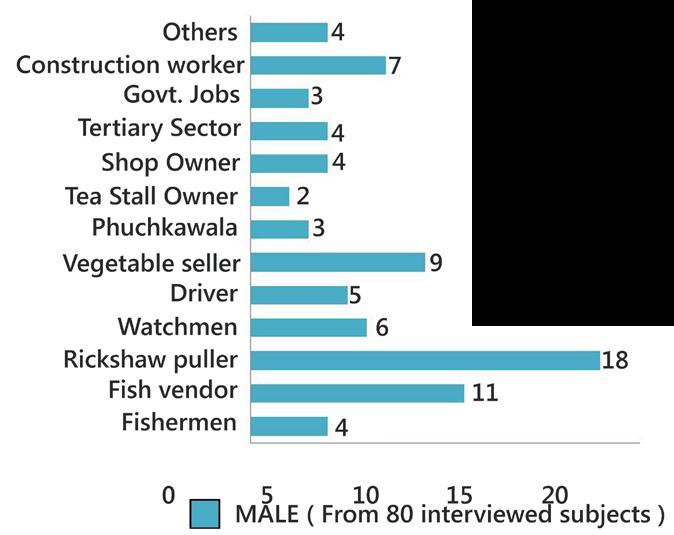
2 minute read
CHALLENGES
Challenges Identified
Water Supply
Advertisement
• No private water taps. • Inadequate water supply points. • Very long queues to collect water. • Crowding encroaches roads making the effective usable area even lower.
Toilets

• Very few houses have toilets. • A few public toilets shared by many • Long waiting queues inconvenient. • Toilets not connected to the drainage lines and tend to dump in soakpits or ponds.
38
Challenges Identified
Drainage
• Prone to flooding on the opposite end away from the slums • Drainage lines on higher side • Open drains prevalent. • Many areas not serviced by drains.

Garbage Dump

Designated spaces for dumping garbage are non existent. People tend to dispose of garbage on the road sides and back yards. The garbage ends up polluting the shared open spaces and water bodies.
39
Agency - Who are we working for?

40
Agency - Who are we working for?

41
Demographics
Age Group

Male Female Ratio

Community

Livelihoods
Male
Below 16 16 - 30 30 - 35 Above 35 Majority of the slum comprises of the people between the ages 16-35 years. These people are the backbone of the slum and form the major source of strength and income in the slum.

Male Female According to the Indian Census 2011, the Kolkata Metropolitan Area has a gender ratio of 58 male to 42 femal per 100, whereas in Dattabad, the stated census stats differ by 5.
Bengalis Biharis Oriyas Foreigners Other states The community consists of a very diverse group of people who have come and settled here - some for over 2-3 generations. Irrespective of the diversity, they live in close knit groups.
Female


42

Education
Economy
The Connectomes
Social and cultural barriers deny slum dwellers the opportunity to complete their basic education. Many children never go to school at all and few complete their primary education. Female literacy rates in the Duttabad slums is 45.39% - compared to an overall rate of 86.31%, whereas the male literacy rate in the area is 66% against an overall rate of 88%.

Lower literacy rates cause youngsters to get into temporary manual jobs with a minimal earning, which leads to unemployment in the long run.
These slums contribute to 17% of the economy of the Bidhannagar area - however they live out their lives in formidable conditions.
43







